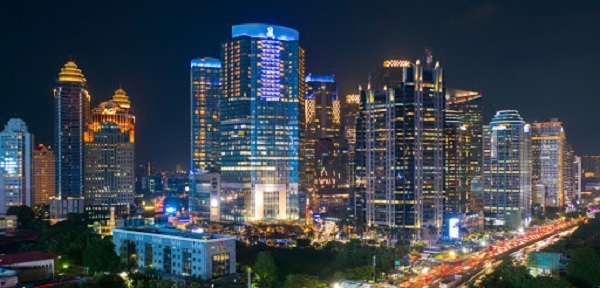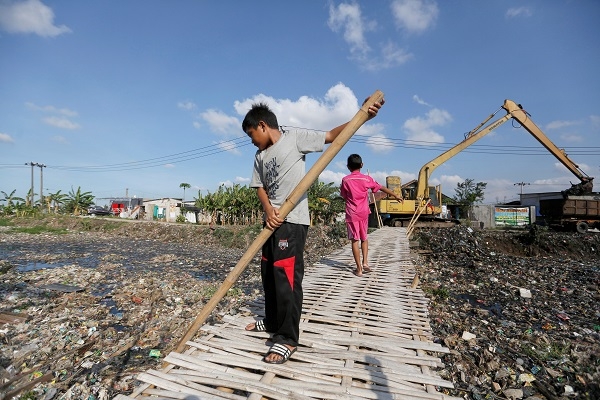Times of Ind(ones)ia - I
Total Views |
I spent a week, 7 nights to be precise - 5 in Bandung & 2 in Jakarta - in Indonesia in December 2016. I had gone there to participate in the 10th Asia-pacific Veterans’ Table Tennis tournament, held in Bandung, the 3rd largest city of that country and a kind of getaway location for its capital-dwellers, who are separated by just 3 hours rail/road journey.

The Game
The tournament was held in the city’s well constructed and maintained sports centre viz. ‘Singgasana Pradana’, having some spectacular residential properties inside. Total around 875 participants (men & women) from 13 countries in the Asia-Pacific region were there. The ethnic Chinese, from China and elsewhere (around 37% of the whole lot) had an overwhelming presence, both among the participating numbers as well as the medal winners. It was a fascinating sight to watch the enthusiastic players in their 60s & 70s (whom we otherwise refer to as grand-fathers/mothers in India), travelling long distances, surmounting language/food barriers and delivering great performances on their battlefields i.e. tables, that too by spending own money, for the sheer love for the game. Overall, a great learning experience, worth spending that much money and time! India was quite under-represented by just 20 men 7 women.
The Travel
Most of us flew Malindo (word is a combination of Malaysia & Indonesia) Airlines, taking the transit halt at KL before landing, in both directions. The airline experience wasn’t very pleasant and I’d recommend looking at options to future travellers. In-flight service quality didn’t seem to be high on their agenda, though they received the award of ‘The Regional Airline of the Year 2016’, last month. I read that in their in-flight magazine but with due respect, didn’t feel convinced about their having deserved it, unless of course their competitors were worse. Incidentally, their CEO is one Chandran Rama Murthy, a Malaysian of Indian origin. My perception about them being overall low on quality was instantly corroborated, when I saw the CEO’s name having been mis-spelt in the same magazine, by writing Muthy in place of Murthy. A moment of truth!
Didn’t come across a single pothole on the roads, in both the cities as well as the on the connecting corridor. Traffic was an issue certainly, just to prove its universality to the Mumbaikars like us, who otherwise feel that it’s only them in the world who suffer out of it. However, honking was almost absent despite it, just like what is experienced in two more bustling South-East Asian cities I’ve been to viz. Singapore & Bangkok. I hadn’t noticed it even in Sri Lanka, which is a South Asian country. So it indirectly means that honking is more of an issue of the Indian sub-continent.
Talking about the traffic, howsoever jammed it may be on any day at any time, the drivers would stop / slow down instantly, without showing any irritation, to make way for the road-crossing pedestrian, whether foreigner or local. It was all foreign to me as I, like any average Indian, hardly experience it back home. Another new phenomenon noticed by my Indian eyes was that there was a patch of square, painted red, at every traffic signal, before the zebra crossing. All the four wheelers stopped before that red patch, whenever the signal turned red, making space for the two-wheelers to come from behind and assemble thereon. This norm was followed throughout, without exception, without any policeman being there to monitor it. ‘Hamara Bajaj’ auto rickshaws were there on Jakarta roads, in good numbers, though without meters. The locals called them ‘bajaai’, for God knows what reason!

The F&B Scene
The local food was perfectly fine for me, as I’m a firm believer in eating strictly local, wherever I go. But what I’ve always noticed that most Indians aren’t so open, as they fear experimentation. They load their baggage with lots of their home-made or supermarket food-stuff before leaving Indian shores, burdening themselves with (unwarranted) responsibilities. What they don’t realise is that they thus limit themselves to their narrowest identity and deny themselves an opportunity to become truly global travellers. Some may frown at this comment of mine, but my question to them is - is food not an inseparable part of any culture in any geography and thus a window for us to peep in and learn about it? I sampled all of the stuff that was on offer there (except of course beef) and quite enjoyed it too! Alcohol was available too for the takers, whenever they needed it, but the outlets were way fewer than noticed back home. It deserves a special mention, considering the ‘Republic of Indonesia’ is a Muslim majority country (and the biggest Muslim country in the world) and Islam, as we know, officially bans alcohol. Cleanliness also appeared to be a part of their culture, which means no special ‘Swachchha Indonesia’ campaign was needed there. Water however wasn’t available free anywhere and you had to buy it by default, just like many other countries worldwide. We learn about its preciousness only in such situations, that too outside India. Images of waiters in Mumbai’s Udipi restaurants handling water distribution on tables so uncaringly appear before us in stark
contrast.
The People
Indonesians are quite simple, affable, polite, friendly & disciplined people. They are courteous to one & all, but a bit more of that towards Indians. I noticed it everywhere. And once I did that, I started wearing my Indian-ness on the sleeve literally, as I started roaming the streets by wearing my TT jersey, with INDIA written on its back. I will dwell on this part more and in a deeper way, in the ‘Part – II’ of this travelogue. They are however a smokers’ society, just like what you’d notice also in Singapore. Both men & women (though quite lesser than men) enjoyed smoking whenever & wherever they felt like. Only the classy types of restaurants (which were very few in numbers) made a distinction of smoking & non-smoking zones inside. Like cleanliness, dignity of labour was very much evident everywhere. Although people like Mohandas Gandhi spent much of their lives in educating Indians about that principle of life, the caste & class-ridden Indian society hasn’t yet taken to it kindly enough. Even from my professional (human resource management) perspective, I noticed that the amount of supervision that was needed in any work area at any level, was the least. Everybody seemed to be responding to work’s situational demands, to the best of their abilities, without seeking help from the next level up, despite the obvious language-forced limitations, while dealing with their overseas customers.
I stop here and promise to come back to you with Part – II, with more interesting stuff. See you then!

